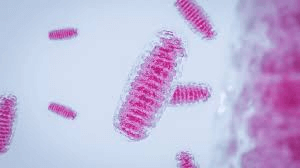The current study focused on the effect of creatine supplementation with/without exercise on the expression of genes controlling mitochondrial biogenesis in skeletal and cardiac muscles, as well as its safety profile on the liver and kidney. A total of 40 male Wister rats were included in the present study. Two unexercised groups: The control sedentary group and the sedentary creatine‑treated group (n=10) were treated daily with oral creatine (0.5 g/kg per day). Two exercised groups performed swimming exercise training 5 days/week for a period of 5 weeks; The Exercise training group, and exercise training and creatine (0.5 g/kg per day) treated group. After sacrifice, blood samples, cardiac and soleus muscles were collected for assessment of mtDNA copy number, gene expression analysis and nuclear extraction for the assay of PGC‑1α. The results of the current study demonstrated that, physical activity with short‑term creatine supplementation increased all factors of mitochondrial biogenesis, an effect that is devoid of any kidney or liver adverse effects. Further studies are still required to explore the potential of creatine supplementation in ameliorating mitochondrial diseases, including epilepsy, skeletal and cardiac myopathies, hepatopathies and nephropathies.
The results of the present study revealed that exercise utilizes endogenous creatine and increases the mitochondrial biogenesis which can be identified using increased expression of PGC-1α and mtDNA levels in soleus muscle, compared with non-exercised groups. Exogenous Cr supplementation increased biogenesis during exercise causing an increase of all key regulatory parameters of mitochondrial biogenesis that can be measured in soleus muscle (PGC-1α, NFR1, TFAM and mtDNA) and therefore, more ATP was available for muscle consumption.
During exercise, pyruvate and lactate are essential fuel substrates for skeletal muscles, which produce ATP, and have been indicated to be correlated proportionally to exercise-induced PGC-1α signaling as stated by Liang et al. This relationship has been reflected in the current study, where increased PGC-1α expression in soleus muscle of exercised rats supplemented with Cr exhibited a significant increase in serum pyruvate level, but not the lactate. These results demonstrated that pyruvate serves directly as a substrate for the mitochondrial TCA cycle to catabolize glucose producing ATP, with no need for interconversion into lactate.
These findings are supported by correlation data, which indicated that mtDNA, NRF-1 and TFAM exhibit a statistically significant positive correlation in cardiac and soleus muscles of exercised rats supplemented with creatine, an effect that has not, to the best of our knowledge, yet been indicated in sedentary rats supplemented with creatine. The lack of immunohistochemical analysis to confirm the increased mitochondrial number is a limitation of the study and will be assessed in future work.
A similar effect has been previously observed in the cardiac muscle, with a decreased effect. Creatine supplementation revealed a tendency to increase mitochondrial biogenesis compared with sedentary rats, as indicated by the transcription levels of NRF-1 and TFAM and supported by the correlation data. There was no clear difference to exercised rats that were not supplemented with creatine, indicating that this was an exercise effect and not an effect of creatine supplementation. Transcriptional coactivator PGC-1α is the major regulator of mitochondrial biogenesis, and this is indicated by the increased expression of NFR-1, TFAM and mtDNA in the skeletal muscles of exercised rats supplemented with Cr, where an increase in the amount of PGC-1α and mtDNA can be observed. However, their levels fail to exhibit the same prominent increase as indicated in the soleus muscle, which was assessed in the current study. This may be due to the fact that PGC-1α expression is activated in the heart upon fasting, as identified by Lehman et al. Fasting is a physiologic stimulus that markedly increases the reliance of the heart on mitochondrial fat oxidation for ATP production.

In the current study, sedentary rats that were supplemented with creatine (SC) demonstrated an increase in rat weight, since Cr is an osmotically active substance, and any increase in muscle Cr content can result in increased muscle water retention and weight gain. However, no significant differences in body weight were observed between exercised rats supplemented with creatine (ETC) or any other group. According to Becque et al, this increase in body mass due to Cr supplementation was the consequence of increased fat-free mass. While Deldicque et al and Safdar et al have reported that the administration of Cr may encourage overexpression of genes and proteins associated with abnormal enlargement of body parts or organs. These alterations would affect the translational process, triggering an increase in lean mass chronically. Chrusch et al demonstrated a significant increase in body mass, and this increase was identified to be lean body weight rather than water retention or fat. Another study also indicated significant increases in fat-free mass following only two resistance training sessions per week.
In conclusion, the results of the current study add to increasing number of studies investigating creatine mechanistic pathways in the mitochondria. It can be concluded that, activity coupled with short-term Cr supplementation increased all factors of mitochondrial biogenesis and improved skeletal and heart muscle functions, and this effect is unrelated to kidney or liver adverse effects. Further studies are required to explore the possibility of Cr supplementation in ameliorating mitochondrial diseases, including epilepsy, skeletal and cardiac myopathies, hepatopathies and nephropathies. In the current study, Cr supplementation with exercise enhanced PGC-1α expression, however, whether this effect can alter the muscle fiber types was not determined. The effect of creatine on different muscle fibers should be assessed in future studies.